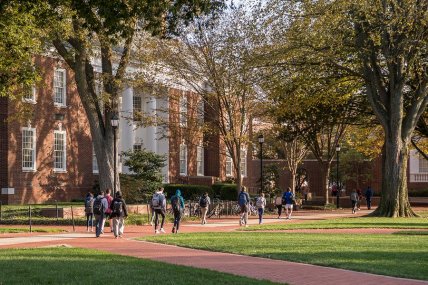Black Americans comprise highest percentage of 1 million COVID ‘excess deaths’ in U.S.
Structural inequities and disparities in health and preventative care have left African Americans most vulnerable during the pandemic.
Last week, the United States hit one million “excess deaths” since the start of the COVID-19 pandemic. Scholars and demographers define “excess deaths” as the number of deaths that happen within a specific timeframe outside of what is considered normal or expected.

As expected, the majority of excess deaths are due to the virus itself. However, according to the CDC, there has also been an increase in the number of deaths due to heart disease, hypertension and dementia. Robert Anderson, chief of the CDC’s mortality statistics department, spoke to The Washington Post last week after excess deaths reached 1,023,916. “We’ve never seen anything like it,” he said.
While the number of excess deaths has made a detrimental national impact, it has been uniquely felt in Black communities. In 2021, a collaborative study was conducted by the National Institutes of Health (NIH) and National Cancer Institute (NCI) to explore the impact of excess deaths during the COVID-19 pandemic on minority communities. The study found that excess deaths in Black, as well as American Indian/Alaskan Native communities were three to four times higher than white communities.
The study noted that the total mortality rate for Black men had increased from 26 percent in 2019 to 45 percent in 2020. This increase also comes as Black men’s life expectancy was reduced by three years, the most of any demographic due to the pandemic. Additionally, in 2019, Black women’s mortality rate was 15 percent higher than white women’s. In 2020, that doubled to 32 percent.
While the country experienced a significant decline in the number of Americans practicing preventative care, the outcomes were much more drastic for African-Americans. While the COVID-19 pandemic highlighted the many structural inequities and barriers that remain within healthcare, a study confirmed the impact of dwindling health resources in Black communities—which actually exacerbated comorbidities such as heart disease, diabetes and hypertension.
Another study found that those comorbidities and other social factors also increased the likelihood of death in Black patients with COVID. Lead study author Dr. Landan Golestaneh spoke to Medical News Today about the research and its findings. Dr. Golestaneh noted that “the worse severity of illness and mortality outcomes seen in racial/ethnic minorities have to do with low socioeconomic status, barriers to adequate high quality healthcare, and residential racial segregation, the latter resulting from a deliberate historical act by the U.S. government to separate residential communities by race and disinvest from Black residential communities.”
While there is hope as the country seems to turn a corner regarding the pandemic and vaccination confidence continues to rise in Black communities, researchers press for a more comprehensive approach to the disparities leaving African Americans most vulnerable. Meredith Shiels, an investigator in the NIH/NCI collaborative study told NBC News that, without it, “there is likely to be a severe widening of racial/ethnic disparities in all-cause mortality as longer-term data are released.”

Candice Marie Benbow is theGrio’s daily lifestyle, education and health writer. She’s also the author of Red Lip Theology: For Church Girls Who’ve Considered Tithing to the Beauty Supply Store When Sunday Morning Isn’t Enough. Find her on Twitter and Instagram @candicebenbow.
TheGrio is now on your TV via Apple TV, Amazon Fire, Roku, and AndroidTV. Also, please download theGrio mobile apps today!


